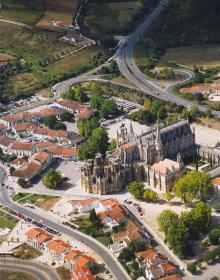
History
History
Batalha was a setting for important moments in history, from the Roman occupation to the decisive battles for independence, as a result leaving us an indispensable cultural legacy. Situated on the left bank of the river Lena, the Town of Batalha owes its existence to the construction of the Monastery of Santa Maria da Vitória, vowed to be built on the site of the Royal Battle. Its population, at first mostly skilled labourers who had worked on the monastery’s construction, grew in number and prosperity throughout the 15th century, and it was granted the status of Town and country seat on March 18, 1500, by royal decree of King Manuel, with a jurisdiction far more modest than it has today. Subsequently in 1512, the Parish of the Exaltation of the Holy Cross was created.
The name and the day to day of the Town of Batalha are therefore intrinsically linked to the history of the Monastery, the architectural jewel in its crown which has turned it into one of the most visited locations in the region and the country.
Other monuments, though artistically less important, can be visited in the town of Batalha: the Parish Church, which was built starting in 1514, with a Manueline door by the master builder Boutaca; the Chapel of the Santa Casa de Misericórdia in the 18th century baroque/Joanine style; and the Bridge of Boutaca, a revivalist neo-Gothic work of the second half of the 19th century, located to the east of the Monastery.
SERVICES - ACTIVITIES
HIGHLIGHTS



